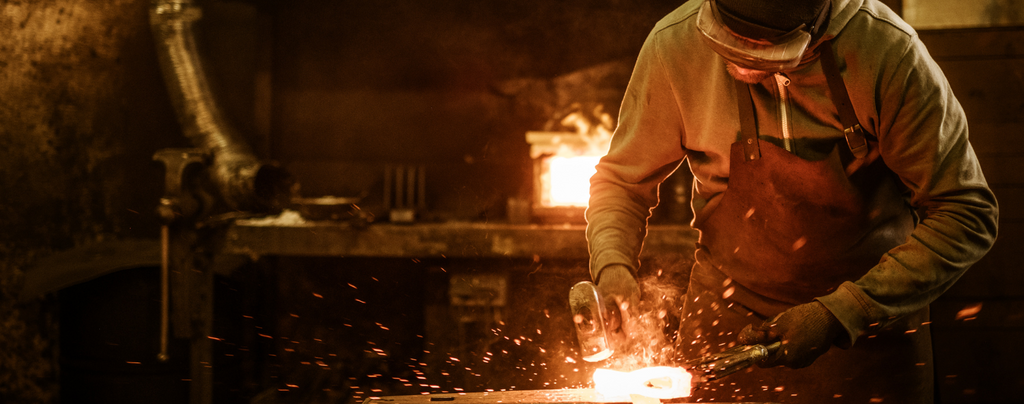The katana is a type of traditional Japanese sword known for its distinctive appearance and skilled craftsmanship. Often associated with the samurai warrior class of feudal Japan, the katana has a long and storied history dating back hundreds of centuries. But are real katanas still made today?
In this blog, we'll explore the current state of katana production and discuss the process of creating these iconic swords.
Modern Katana Production:
Despite the Sword Abolishment Edict of 1876, which prohibited the carrying of swords in public in Japan, katana production has continued to this day. Today, there are a number of artisans in Japan who specialize in the creation of traditional katanas, using methods and techniques that have been passed down for generations.
These artisans, known as togishi, are highly skilled craftsmen who have spent years learning and perfecting their craft. They begin by selecting the finest quality steel for the blade, which is then forged using traditional techniques and tools. The blade is then shaped and polished, and a distinctive curvature is added to give it its characteristic appearance.
The katana's handle, or tsuka, is also carefully crafted using a variety of materials, including wood, leather, and brass. The handle is wrapped in silk or cotton cord, known as tsuka-ito, and the sword is finished with a decorative metal fitting called a tsuba.
While traditional katanas are still made in Japan today, they are not produced on a large scale. Instead, they are crafted by individual artisans or small workshops, and each sword is a unique and highly prized work of art.
Katana Replicas and Reproductions:

In addition to traditional katanas, there are also a number of replicas and reproductions of these swords available on the market. These swords are typically made using modern materials and manufacturing techniques, and they are not considered to be true katanas.
While replicas and reproductions can be less expensive than traditional katanas, they are not made using the same level of craftsmanship and attention to detail. As such, they are generally not as highly valued by collectors and enthusiasts.
Modern Swordsmiths in Japan:
In Japan, the art of swordsmithing is known as tōshō-gū, and it is a highly respected and revered profession. Modern swordsmiths in Japan, known as togishi, are skilled craftsmen who have spent years learning and perfecting their craft.
Togishi follow a strict set of guidelines and traditions when creating a katana, and each step of the process is carefully planned and executed. The togishi begins by selecting the finest quality steel for the blade, which is then forged using traditional techniques and tools. The blade is then shaped and polished, and a distinctive curvature is added to give it its characteristic appearance.
The process of creating a traditional katana is time-consuming and labor-intensive, and it requires a high level of skill and attention to detail. As such, traditional katanas are not produced on a large scale and are considered to be highly prized works of art.
In addition to traditional katanas, many modern swordsmiths in Japan also create other types of swords, such as wakizashi (short swords) and tanto (daggers). These swords are often used for martial arts practice and training, and they are made using similar techniques to traditional katanas.
The tradition of swordsmithing in Japan is an important part of the country's cultural heritage, and modern swordsmiths work to preserve and pass down these skills and traditions to future generations.
There are many modern swordsmiths in Japan who specialize in the creation of traditional katanas and other types of swords.
Here are a few examples of well-known modern swordsmiths in Japan:
-
Masamune Okazaki: Masamune Okazaki is a renowned swordsmith who has been creating traditional katanas for over 40 years. He is the head of the Okazaki School of swordsmithing and is known for his attention to detail and use of traditional techniques.
-
Sadatoshi Iwasaki: Sadatoshi Iwasaki is a third-generation swordsmith who has been practicing his craft for over 50 years. He is the head of the Iwasaki School of swordsmithing and is known for his skill in creating traditional Japanese swords.
-
Kazuyoshi Kato: Kazuyoshi Kato is a well-respected swordsmith who has been creating traditional katanas for over 30 years. He is the head of the Kato School of swordsmithing and is known for his attention to detail and use of traditional techniques.
-
Ichiro Hattori: Ichiro Hattori is a skilled swordsmith who has been creating traditional katanas for over 20 years. He is the head of the Hattori School of swordsmithing and is known for his attention to detail and use of traditional techniques.
-
Koji Yamanaka: Koji Yamanaka is a talented swordsmith who has been creating traditional katanas for over 25 years. He is the head of the Yamanaka School of swordsmithing and is known for his attention to detail and use of traditional techniques.

























